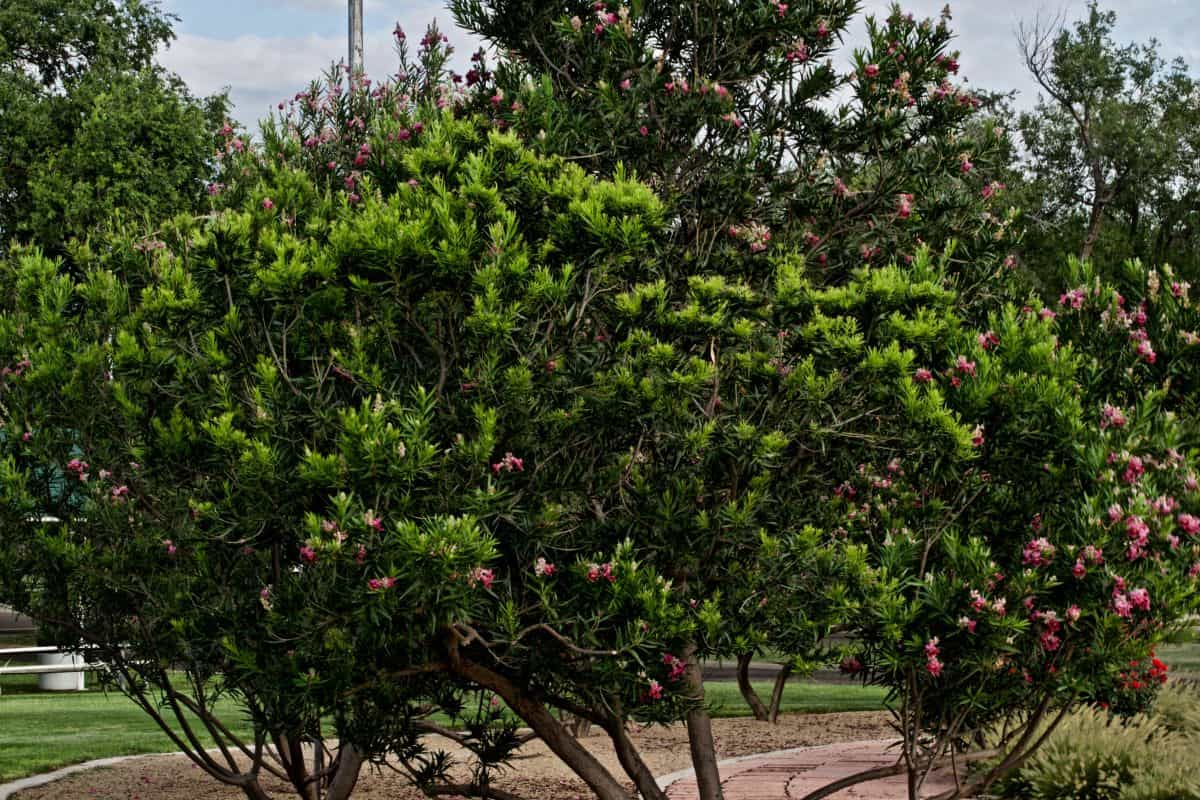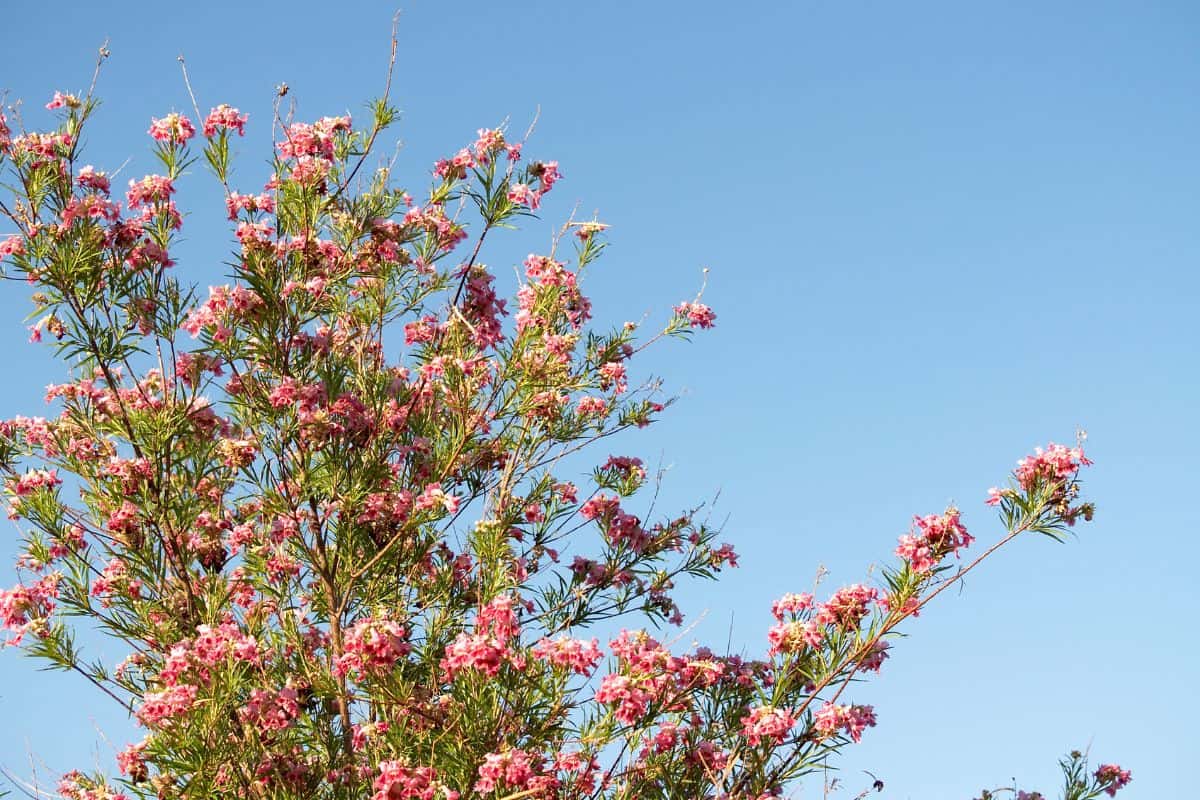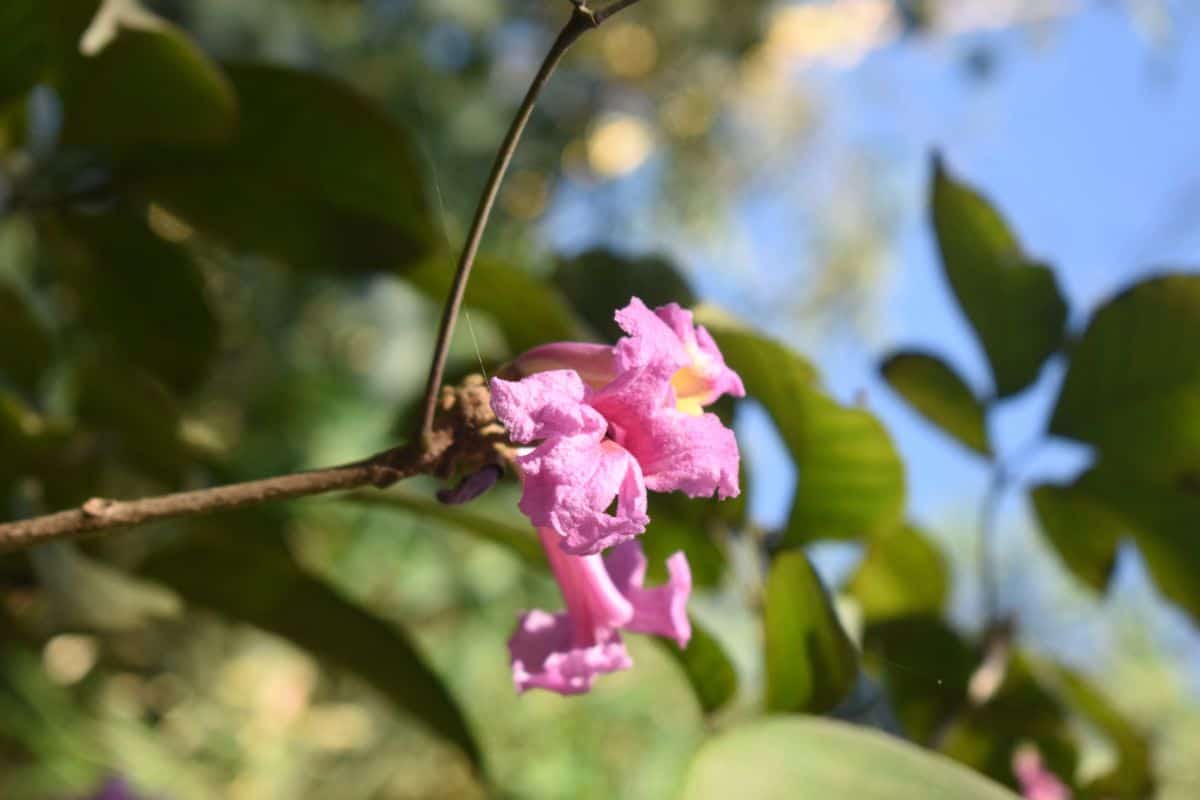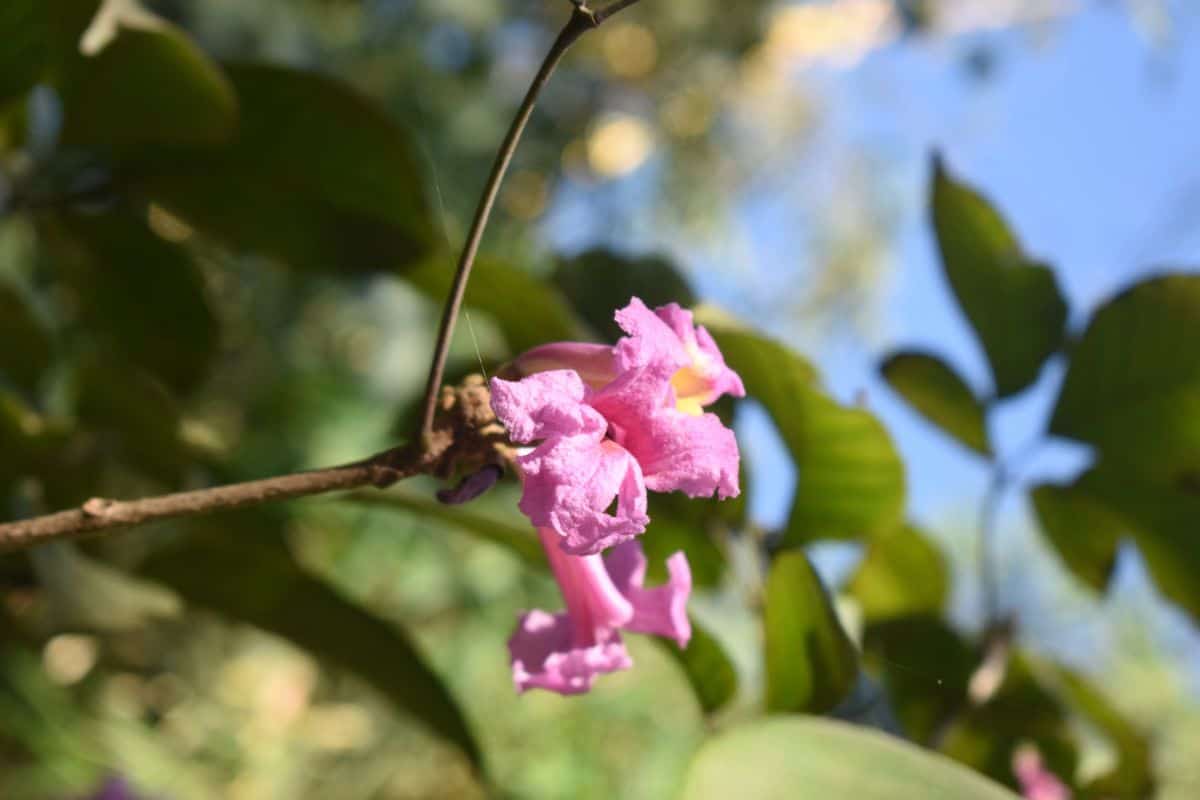It may have the term "willow" in its name, but a desert willow is interestingly not from a willow tree family. Planting this shrub on your property is great since it can provide shade, a pleasant smell, and other benefits. And to learn the growth habit of this plant, we have researched on the internet how fast and how big they get.
A desert willow can grow at a fast rate. It can increase its height by up to 24 inches yearly, at a minimum growth of 13 inches. In its maturity, expect it to grow at least 15 feet and at a maximum of 30 feet. Additionally, its width can be 10 feet.
Before you start planting a desert willow, it would be best to know everything about it, especially the process of growing and taking care of it. Growing this small tree or large shrub is easy, as long as you know the proper approach. Let's delve into the details!
![Desert Willow Trees in Bloom, Lindsey City Park, Canyon, Texas. - How Fast Do Desert Willows Grow [And How Tall And Wide Do They Get]?](https://gardentabs.com/wp-content/uploads/2023/05/Desert-Willow-Trees-in-Bloom-Lindsey-City-Park-Canyon-Texas.png)
Characteristics Of A Desert Willow Tree

Since it can grow to a maximum height of 30 feet and 10 feet at maturity, a desert willow would be perfect for shade during the hot summer months. On the other hand, it can also contribute to your home's overall warmth and coziness during the winter season.
Additionally, there are further distinct attributes that a willow tree can provide, and they are the following:
- A desert willow tree has a horizontal or circular growth habit.
- It grows in a dense, branching manner, and this makes it an ideal tall fence.
- It is characterized by its leaves that change color during fall, from a bluish green or dark green to color golden leaves.
- Desert willows produce pink and fragrant flowers that usually appear during midsummer.
- It can often grow to have numerous trunks.
- The flowers of a desert willow can draw hummingbirds. Desert birds can use this large shrub as a nesting location, while other animals can use it as ground covering.
- The maintenance it needs is easy.
- It can thrive in excessive drought. Which makes it ideal for xeriscaping.
- Produces a seed pod that's 10 inches long and which survives the winter.
- It is possible to use desert willows' branches to create thatch roofs.
- The tree can litter during winter, which is its disadvantage.
How To Propagate A Desert Willow Tree

There are two typical ways to propagate desert willows, and they are:
Propagating Using Seeds
This method is the easiest one and is recommended to perform:
- Prepare a glass of water and vinegar with a ratio of 50:50.
- Soak the seeds of the desert willow. Leave it for four hours.
- While you wait for the seeds, ready the pots, and fill those pots with soilless seed starting mix.
- Plant the seeds a quarter of an inch deep in the pots you have prepared, and make sure they have plenty of water. Water consistently until germination occurs.
- A good rule of thumb is to wait until you notice two sets of leaves. Also, you must ensure they are four inches tall before putting them in a bigger pot. Additionally, this container must be sufficiently large to accommodate the plant's eventual size.
- Exposing your young desert willows to the elements for 30 days will help them solidify. The next year, you can either plant it in the ground or let it mature in its pot.


Click here to check out this seed starting potting mix on Amazon.
Propagating By Cutting
There are cultivars you cannot propagate by seeding, so this method will be a great advantage.
This approach may not be as straightforward as the first, but you will surely obtain a much-grown desert willow. Also, you'll have the very same existing plant.
- Look for a small limb and cut it using a sterile sharp knife. However, it would be best to choose one that is nearest to a leaf node.
- Prepare a rooting hormone.
- Please read the instructions on the rooting hormone's packaging before you plunge the desert willow cuttings into it.
- After dipping the desert willow cuttings into the rooting hormone, put them in a pot of water.
- Observe the cuttings. If you notice that the development seems to be slow, you can opt to add rooting hormone into the water to improve and accelerate its growth.
- Once you see at least three roots appearing, you can now transplant them. Use a pot that contains soilless potting mix.
- Ensure that the desert willow cuttings receive adequate water as needed. You should also ensure that the soil drains well every watering.
- Lastly, check the cuttings after two months for established and firm roots. Once confirmed, ready the plant for transplanting to the ground.


Click here to check out this rooting hormone on Amazon.
How To Properly Care For A Desert Willow Tree

A desert willow tree seems to have magic. It is because, aside from requiring only a little maintenance, you can still expect new sprouts even if you cut the tree down, and left only a stump.
If you have no idea how to take care of this shrub properly, it would be best to follow the tips below:
Choose The Right Location To Plant Your Desert Willow Tree
The recommended location you should plant your desert willow is in an area where it is much warmer and has soil that drains well than the rest of the area.
Provide Water Correctly
One significant distinction of a desert willow tree from most other trees is that it can withstand droughts and extended periods of dryness with relative comfort when it establishes. So, you don't have to worry about the harshest times of the year. Such a tree will appear to be perishing but then recover after watering.
Your desert willow will do okay even if you can only water it deeply once a month. Look no further if you're looking for a drought-tolerant tree or shrub to incorporate into your garden or yard.
Plant It In The Appropriate Soil
Desert willow is a versatile plant that can adjust to any soil condition. However, if it is only a young desert willow, it would be best to provide it with dry to a bit wet soil as it can thrive in such soil at its best. In addition, it is necessary to ensure that the soil drains well and has a higher pH level.


Click here to check out this soil tester on Amazon.
Provide A Great Amount Of Sunlight

A critical requirement of any plant is to receive adequate sunlight. This factor is what makes every plant bright and lively.
Your desert willow tree will excellently grow if you allow it to receive the right amount of sunlight it needs. You'll enjoy a lot of flowers and dark green or bright blue-green leaves if you plant them in an area where it can get full sun or six hours of direct sunlight.
If you can't provide your desert willow with such an amount of sunlight, it will fail to produce blooms.
Provide Microclimates
Since a desert willow tree loves to be in dry and hot climes, it would be best to ensure they can receive it in your yard or garden. But if it is unattainable, let it have microclimates that simulate similar circumstances.
It is highly recommended to utilize a soilless growing medium, like stones, gravel, sand, sawdust, peat, or similar to create an environment similar to this.
Do Not Fertilize Desert Willows
It is not suggested to feed a desert willow tree with fertilizers. Although it sounds good to do so, it will only increase its stamina and produce quickly developing branches, which is not attractive to see.
You can do it if you want to. However, expect that it will produce a crispy, mushy wood. And since your desert willow is artificially nurtured, it can easily crack and bend in high winds.
How Long Is The Lifespan Of Desert Willow Trees
This long-lived tree can survive up to 150 long years, in full light, in dry locations, and at an elevation of fewer than 5,000 feet. The minimum lifespan of desert willows is 40 years.
![Desert willow (Chilopsis linearis). - How Fast Do Desert Willows Grow And [How Tall And Wide Do They Get]?](https://gardentabs.com/wp-content/uploads/2022/09/Desert-willow-Chilopsis-linearis.-How-Fast-Do-Desert-Willows-Grow-And-How-Tall-And-Wide-Do-They-Get.png)
It's A Wrap!

The attainable height of a desert willow tree is indeed helpful, especially in regions where dry and hotness are superior. It would be best to plant this large shrub near your house to provide shade and keep the surroundings cool and fragrant. Using numerous desert willows as tall hedges would be great if you want to.
We hope you find this post helpful. Please reach us in the comments if you still have additional questions that you wish to be answered. And to continue reading, check these posts out:

![Desert willow tree (Chilopsis linearis). - How Fast Do Desert Willows Grow [And How Tall And Wide Do They Get]?](https://gardentabs.com/wp-content/uploads/2023/05/Desert-willow-tree-Chilopsis-linearis.-How-Fast-Do-Desert-Willows-Grow-And-How-Tall-And-Wide-Do-They-Get.png)
